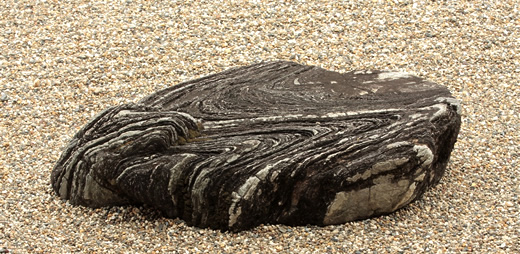WORLD HERITAGE SANBOIN and the garden
Sanboin temple was built in 1115 by Shokaku, the 14th archbishop of Daigoji Temple. It is the main house where the feudal archbishop stay of all houses in Daigo temple.
The present Sanboin was reconstructed by Toyotomi Hideyoshi in 1598. Its Karamon and Omote-Shoin(representative building of shinden-zukuri in Heian Period and from where you can see whole view of the garden) were designated as national treasures while most of the other buildings are designated as important cultural assets.
The garden, which was designed by Toyotomi Hideyoshi himself and represents the Momoyama period, is designated as a special historic spot and a place of particular scenic beauty within Japan, reminding us of Hideyoshi's glory.
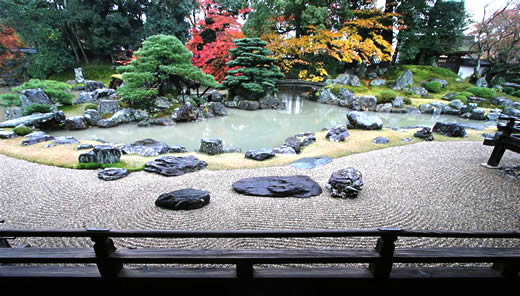
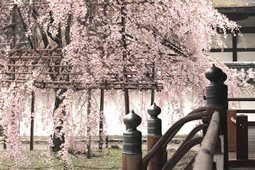

Aoi-no-ma (important cultural asset)
The Aoi-matsuri is one of the three big festivals in Kyoto together with Gion-matsuri and Jidai-matsuri. A depiction of a parade from Shimogamo Shrine to Kamigamo Shrine during the Aoi-matsuri is painted on the sliding screen.
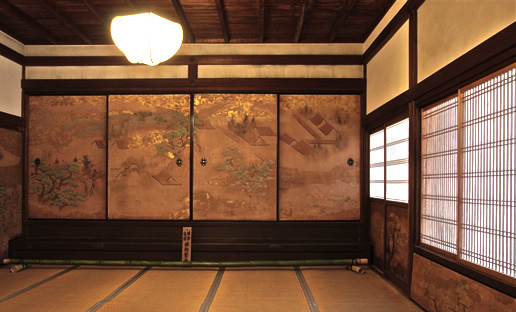
Akikusa-no-ma (important cultural asset)
A depiction of spacious scenery with scattering of the seven autumnal herbs is painted on the sliding screen.
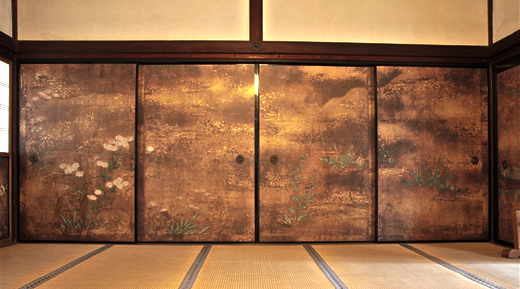
Chokushi-no-ma (Chamber for Imperial Messengers, important cultural asset)
A scene of a bamboo forest with flowers and birds is painted on the sliding screen. The painting is a work of the Momoyama period and is believed to have been painted by an artist group related to Hasegawa Tohaku.
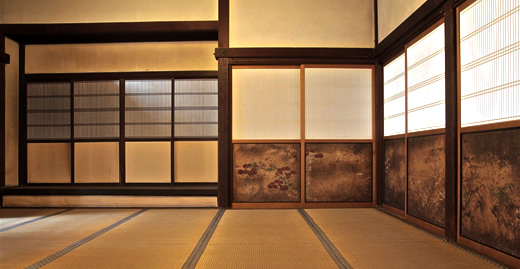
Karamon (Chinese gate, a national treasure)
The Sanboin is one of the temples for the Imperial family. The Karamon is the special gate which opened the doors only when the Imperial messengers visited. It was entirely black-lacquered and employed four large chrysanthemum and paulownia motifs plated with gold when it was built. Its gorgeous design reflects the atomosphere in the Momoyama period (1568-1615).

Omote-Shoin (Main drawing room, a national treasure)
The Main Drawing Room (Omote-shoin) looks towards the garden. It is very unique, for the railing in the veranda and a detached room in the southwest show the adoption of shinden zukuri (mansion architecture of aristocrats) in the Heian period. There are lower, middle and upper rooms in Omote-Shoin. The gedan (lower) room is also known as "Agebutai-no-ma," which can be used as a Noh stage when the tatami mats are removed. The middle and upper rooms are one-step higher than the lower room to be able to see the Noh and Kyogen performances from a higher position. In the east side of the Main Drawing room, there is a building with a thatched roof, called Junjokan (important cultural asset).
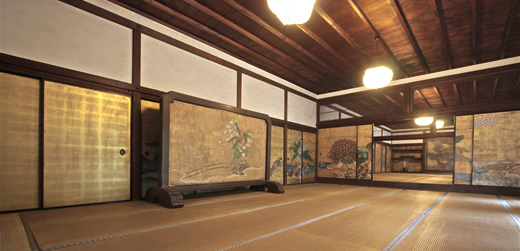
Fusuma-e in Omote-Shoin (important cultural asset)
The fusuma-e (painting on a sliding screen) in the upper room of Omote- Shoin is a painting with a motif of willows in the four seasons. The painting on the sliding screen in the middle room represents a mountain field. The paintings in the upper and middle rooms are said to have been painted by an artist group related to Hasegawa Tohaku. The painting of a peacock and a cycad in the lower room is a work of Ishida Yutei.
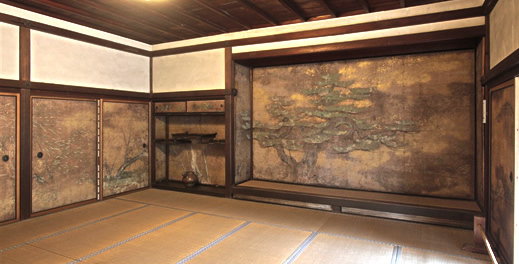
Kameshima
Overall Kameshima Island is covered with Japanese white pine trees with large trunks and looks like a tortoise shell. This fine pine tree is said to be older than 600 years old. It represents the "quietness" of a tortoise.
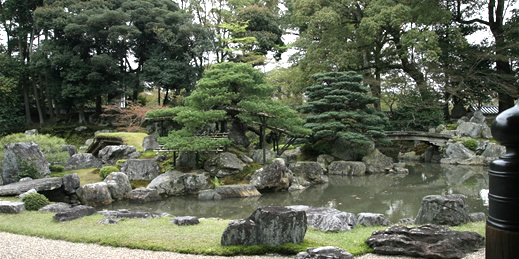
Tsurushima
Tsurushima is an island located west of Kameshima. The trees is also a Japanese white pine tree and the stone bridge on the left represents the neck of a crane. It represents the "dynamism" of a crane that is about to take off.

Kamo no Sanseki
There are three rare-shaped stones in front of the pond. The left, middle and right stones represent "fast flow," "stagnant water" and "breaking water" of the Kamo River, respectively.

Fujito Ishi
These stones are located in the center of the garden and represent three Amitabha Buddha. They are known as “celebrated stones” because they have been handed over from one feudal warlord to another.
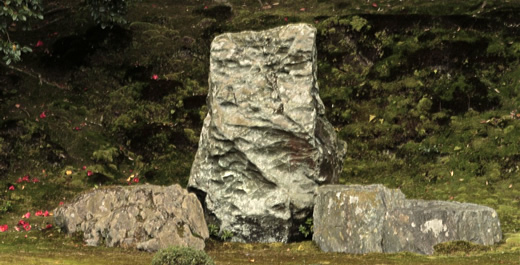
Houkoku Daimyojin
This is a shrine dedicated to Taiko Toyotomi Hideyoshi, who was committed to the restoration of the whole of the Daigoji complex including development of the manor house and the garden of Sanboin, repair of the five-storey pagoda, as well as reconstruction of Kondo Hall. This shrine was built to pay homage to his dedication.
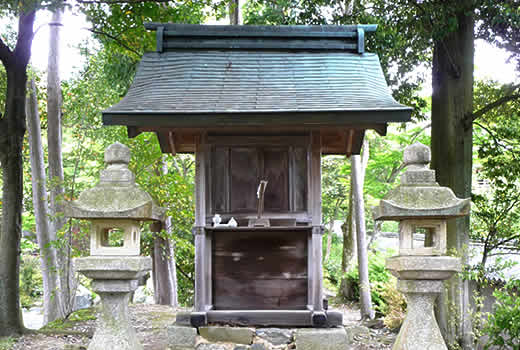
Chinryutei
This is a tea room in the southeast part of the garden. The doorway of a Japanese tea room is usually a nijiri-guchi (a crawl-through doorway) but the doorway of Chinryutei is a kinin-guchi (a walk-through doorway), so guests can enter and exit the room without bending down. There are three rooms in Chinryutei, namely, the upper room, middle room and preparation room, from south to north. Rare trees such as palms and chestnut trees are used for columns.

Sandan-no-Taki
The waterfalls in the corner of east-south of the garden. It was completed by making the waterfall at higher position and arranged the large rocks as a deep forest. Now it is the highlight scenery in Sanboin garden.
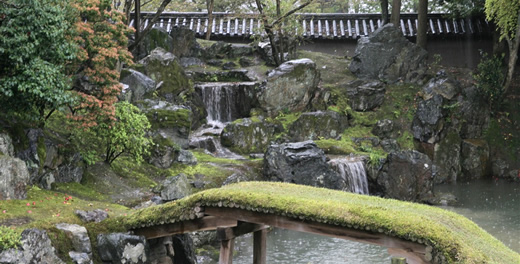
Junjokan (important cultural asset)
It is said that Junjokan is a building used by Taiko Toyotomi Hideyoshi when he held cherry blossom viewing parties and was relocated from the original site on Yari-yama. Paintings of cherry blossoms and maple leaves on the sliding screen were painted by Hamada Taisuke after 1989.
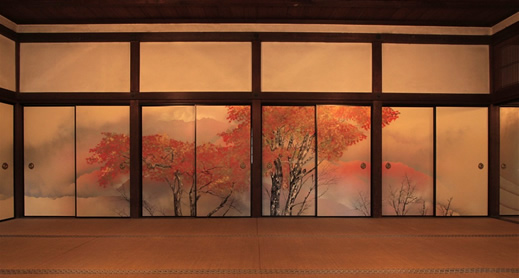
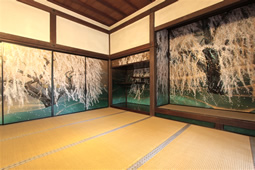
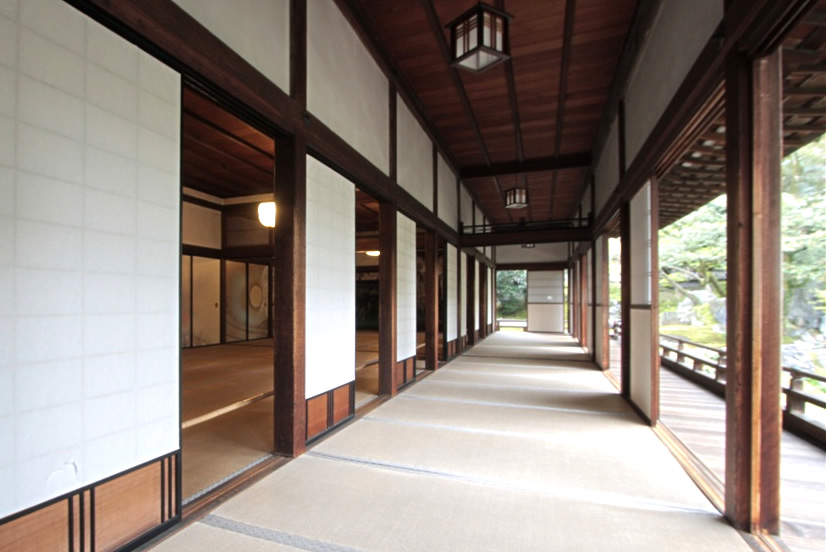
Hondo (important cultural asset)
The principal image of Hondo Hall is Mirokubosatsu (Maitreya bodhisattva) carved by Kaikei, so Hondo Hall is also known as "Mirokudo". The statue on the right is of Kobo Daishi, the founder of the Shingon mission, and the statue on the left is of Shobo Rigen Daishi, the founder of Daigoji Temple. There is a goma-dan (altar used for holy fire), known as "Gomado" Hall, behind Hondo Hall.
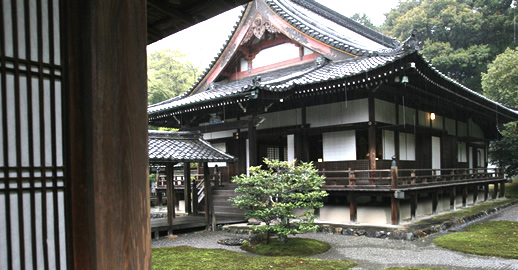
Kokeniwa
Next to the Hondo, there is a garden called "Sakazukushi" which is arranged only with moss and white sand and represented "hyotan", "sakazuki" and "sake".
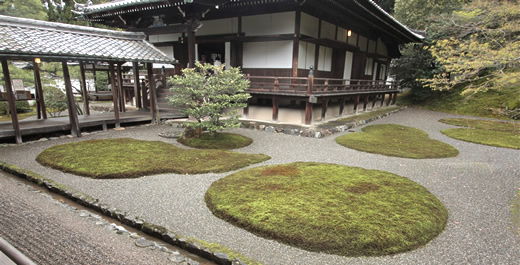
Okushinden (important cultural asset)
The Okushinden Hall was built in the beginning of Edo period. The rooms are arranged just as a Chinese character "田". The main room is equipped with an extra space for reading (called shoin doko), shelves (called shoin dana), and a groove in the alcove commonly called musha gaeshi. A chigaidana (a set of staggered shelves), known as "Daigodana," forms one of "Japan's three finest shelves together with "Kasumidana" in Shugakuin Rikyu and "Katsuradana" in Katsura Rikyu.
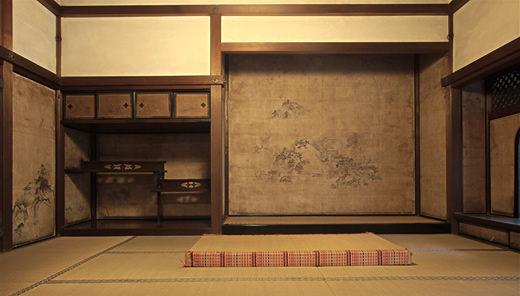
Shogetsutei
This is a tea room in the northeast of the Okushinden Hall. It was built in the end of Edo period. Its uniqueness lies in the four-and-half (Japanese) mat room and a round window in the east. In the south side there are the banboo verandah and the entrance. The roof is a kiritsuma (gable) type made of shingles.

